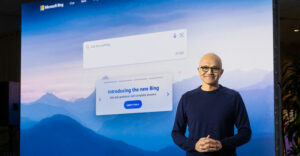
Ask.com rolled out a new version of itself Monday. The revamped search engine includes a new user interface with three new technologies — DADs (Direct Answers from Databases), DAFS (Direct Answers From Search) and AnswerFarm — that offer users the ability to search the Web using commonly spoken language.
The enhancements to Ask.com will help the site retain existing users and attract new, said Caroline Dangson, an IDC analyst.
Natural Language Search
Ask.com’s new technologies differ from those used by competitors such as Google, Yahoo and MSN Search because they enable Web surfers to type real questions, instead of a series of keywords, said Erik Collier, vice president of product management at Ask.com.
To find out what football games are on the TV Sunday afternoon, users simply type in, for instance, “What NFL games are on TV this Sunday?”
That is where DADS comes in. The acronym stands for “Direct Answers from Databases.” The technology takes structured data feeds and converts them into information that Ask.com tags.
“It’s different than a traditional syntactical text matching. We’re understanding what the subject is, so we have discrete subjects. We’re talking about TV listings, event listings that have a much smaller semantic breath than a general word search. We optimized that, and it is discrete. We are able to identify that as a TV query; translate the different piece of your sentence into what they really mean,” Collier told TechNewsWorld.
So, today is Monday, Oct. 6, then “this Sunday” means Oct. 12, and NFL means the National Football League.
“We don’t get lost in that traditional what does ‘a bat’ mean when someone says ‘bat.’ That’s DADS, and we’re going to be doing that across a lot more verticals or discrete data sets. Right now, we’ve done that with our TV and event listings,” Collier added.
Giving Structure to the Unstructured Web
Direct Answers From Search (DAFS) is a bit different, in that it does gather the information from a structured feed. It is information gathered from the Web around which Ask.com tries to create some structure in order to best answer users’ questions, Collier said.
“It’s a much more difficult proposition. We’re trying to extract information from the Web pages themselves and trying to then create an answer to a specific question term. If you said, ‘What is the largest state in the U.S.?’ then it would have a DAFS response that would tell you directly on the page, ‘Alaska is the largest state,'” he explained.
DAFS does not offer quite the same level of natural language comprehension as DADS because it is more difficult to deal with unstructured documents on the Web, Collier noted.
Similar to DAFS, AnswerFarm combs through the unstructured content on Q&A sites such as WikiAnswers and Wikipedia searching for what Ask.com calls “Q&A Pairs.”
“There’s a question and an associated answer with it. It flips the way people interact with Web results,” he said.
Say a person asks, “How do I get rid of love handles?” On other search engines the questioner would receive some document it has identified as having a lot of keyword matches, and it will return a title and description in the search results, according to Collier.
“You don’t really know if that page will answer your question. AnswerFarms are different. Let’s say that same URL (universal resource locater) does answer [the question]. We present it in a way that the question, not the title of the page, is immediately visible. And instead of traditional description text, the start of the answer is given,” he stated.
“I love AnswerFarms because it changes the way that people interact with search engines,” Collier added.
Market Status Quo
The new technologies are intended to produce more relevant results so users click less. “Our goal is to return the best answer the first time, every time. We think its a better approach. We make your search faster and we’re trying to reduce the amount of clicks it takes for you to find what you’re looking for,” said Collier
“People don’t want to talk to a search engine like a computer. They want to be able to do a search the way they would ask [a friend] over the phone. ‘Hey do you know what the largest state in the U.S. is?’ instead of ‘state, most area, square miles.’ That’s not the way you really want to ask it. You want it to understand all those implicit things, all the background knowledge you provide in a single word,” he pointed out.
That may be true, but IDC’s Dangston does not see the new Ask.com posing any threat to its leading search competitors, Google, Yahoo or MSN Search.
“The Ask.com redesign is not a game changer. Google has incredible brand recognition. An incredible number of U.S. consumers are in the habit of Googling. We know that media habits are hard to change. According to IDC’s recent U.S. consumer online attitudes survey, 75 percent of online Americans said they had used Google.com in the past 30 days whereas only 15 percent said they had used Ask.com,” she concluded.




















































